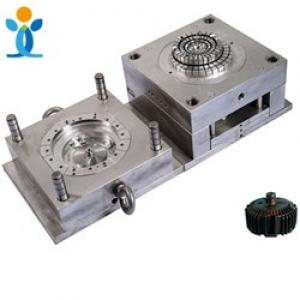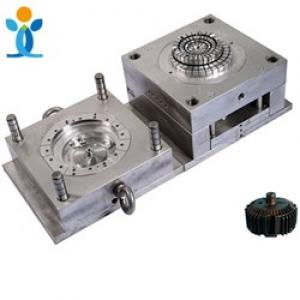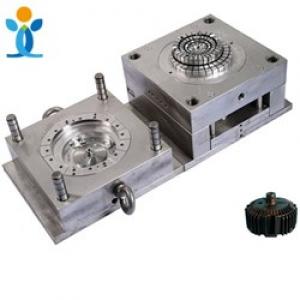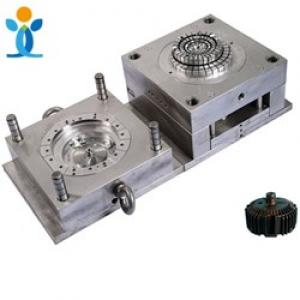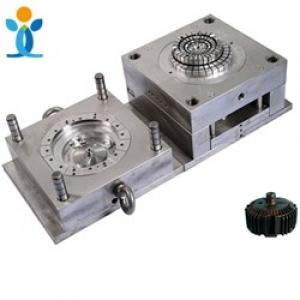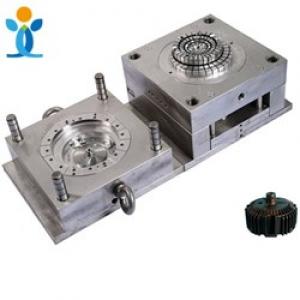solution of uneven color of injection molded parts
solution of uneven color of injection molded parts
1. The quality of the colorant does not meet the requirements
The performance of colorants is directly related to the color quality of plastic parts after molding. If the dispersibility, thermal stability and particle morphology of the colorants can not meet the process requirements, it is impossible to produce excellent products with good luster.Some colorants are in the form of aluminum foil and sheet, which will form a directional arrangement after being mixed into the molten material, resulting in uneven surface color of plastic parts.
Some colorants adhere to the surface of material particles after mixing with raw materials by dry mixing, which leads to uneven color after entering the barrel.
If the thermal stability of colorants or additives is poor, it is easy to decompose in the barrel, resulting in discoloration of plastic parts. In addition, the colorant is easy to float in the air and deposit in the hopper and other parts, polluting the injection molding machine and mold, resulting in uneven surface color of plastic parts.
Therefore, the color additives should be carefully selected according to the process conditions and the color requirements of the plastic parts, especially for the heat-resistant temperature, dispersion characteristics and other important indicators must meet the process requirements, and the colorants should be wet mixed.
If the injection molding equipment and mold are contaminated by colorant, the hopper, barrel and mold cavity should be thoroughly cleaned.
2. The raw material does not meet the requirements
If the content of volatile matter in raw materials is too high, mixed with different materials or poor drying; after the fiber reinforced raw materials are molded, the fiber filler is not evenly distributed, the accumulation is exposed, or the resin dissolves and the fiber is exposed after the surface of the plastic part contacts with the solvent; the crystallization performance of the resin is too poor, affecting the transparency of the plastic part, which will lead to uneven surface color of the plastic part.
In addition, the internal stress of high impact polystyrene and ABS is larger, and stress discoloration will occur.
For the above faults:
Remove the foreign matter in the raw material, purify the raw material, and pre dry the raw material to reduce the moisture in the raw material;
By adjusting the process parameters, the distribution of fibers in the resin is improved, and the amount of lubricant and release agent is reduced as much as possible;
The crystallinity of the melt can be improved by changing the resin with good crystallinity or by controlling the cooling conditions of the plastic parts;
For the raw materials easy to produce internal stress in forming, the process conditions that can reduce the forming internal stress should be adopted.
3. The molding conditions are unreasonable
Uneven color often reflects the phenomenon of different, and its causes are also different. If the color is not uniform near the feed inlet or the welding part, it is generally caused by the uneven distribution of the colorant or the nature of the colorant does not meet the use requirements.
If the color of the whole plastic part is uneven, it is often related to the molding process conditions. When the temperature of the barrel is too high, the high-temperature molten material is easy to overheat and decompose in the barrel, causing the plastic part to change color. If the temperature at the nozzle is too high, the molten material will coking and accumulate at the nozzle, which will also cause uneven surface color of plastic parts.
In addition, the screw speed, injection back pressure and injection pressure are too high, the injection and holding time is too long, the injection speed is too fast, the plasticization is poor, there are dead corners in the barrel and the amount of lubricant is too much, which will lead to uneven surface color of plastic parts.
In order to prevent the molten material from overheating and decomposition when staying in the high-temperature barrel for too long, the injection volume should not exceed two-thirds of the injection capacity of the injection molding machine.
When coking molten material is accumulated at the barrel or nozzle, the barrel shall be thoroughly cleaned, the nozzle shall be removed and cleaned, the nozzle tip shall be checked for alignment with the runner sleeve, and the nozzle temperature shall be properly reduced.
For the screw speed, back pressure, injection pressure, injection and holding time and other process parameters adjustment, according to the actual situation, according to the principle of adjustment item by item.
4. Mold problems
If the oil in the mold, the release agent or the dirt from the friction between the pin and the pin hole is mixed into the molten material, the poor exhaust of the mold and the uneven cooling of the mold will lead to the discoloration of the plastic part surface. Therefore, the cavity should be clean before injection.
in order to reduce the influence of bad exhaust, the clamping force can be reduced properly, or the gate can be repositioned, and the vent hole should be set at the last mold filling position.
Because the mold temperature has a great influence on the crystallinity of the melt during solidification, the mold should be cooled evenly. For example, when molding crystalline plastics such as polyamide, if the mold temperature is low, the melting material crystallizes slowly, and the surface of the plastic part is transparent; if the mold temperature is high, the melting material crystallizes quickly, and the plastic part becomes translucent or milky white. Therefore, the surface color of plastic parts can be controlled by adjusting the mold and melting temperature.
